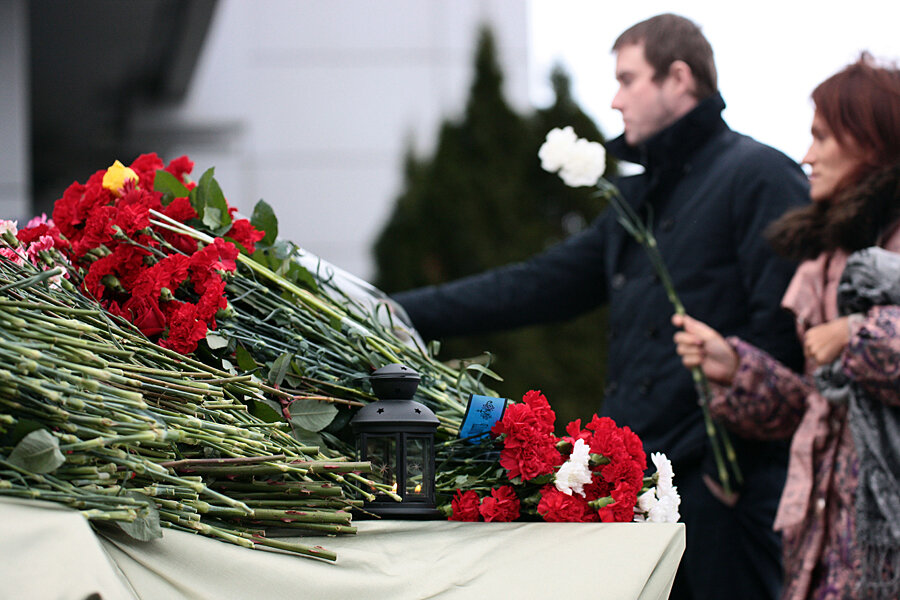Is a deadly Russian plane crash a sign of a failing system?
Loading...
| Moscow
Just when you thought it was safe to take to the Russian skies again, the horrific crash of a Tatarstan Airlines Boeing 737 in the Volga city of Kazan, which killed all 50 people aboard, has raised anew the issues that have plagued Russian regional airlines for the past two decades: Aging aircraft, faulty maintenance, substandard airport infrastructure and poor pilot training.
A shocking video on YouTube apparently shows the airliner nosediving into the runway and exploding after at least one aborted attempt to land in rough weather.
Russian investigators say they will be examining the video, along with the plane's badly-damaged black box. The plane was on a regular flight from Moscow to Kazan, about 450 miles to the east, and officials have said the blustery wind and light rain at the airport were normal for this time of year. Among the dead are Irek Minnikhanov, the elder son of Republic of Tatarstan leader Rustam Minnikhanov, and Aleksander Antonov, the head of the local branch of Russia's FSB security service.
Investigators told Russian media Monday that they have ruled out terrorism and are looking into five likely causes of the accident. Those include pilot error, weather conditions, bad fuel, failure to observe safety rules and faulty maintenance of the 23-year old Boeing plane. That stirs the doubts that Russian airlines have struggled hard to shake off since accidents peaked in the disastrous year of 2011, when Russia had by far the world's worst safety record, according to the International Air Transport Association [IATA].
According to the group, Russia and the Commonwealth of Independent States (making up the former Soviet Union) suffered 8.19 plane losses per million take-offs in 2011, nearly twice the global average of 4.17, and seven times worse than North America's 1.18 losses per million. Russian accidents that year included the crash of a Yak-42 aircraft near the Volga city of Yaroslavl, which wiped out that city's entire hockey team, and two other mass-fatality incidents. But in the past two years Russia's air safety record has improved markedly and IATA has praised Russian airlines for bringing their accident rate down to North American levels in 2012.
That likely has something to do with the fact that leading Russian carriers have been retiring aging Soviet-built aircraft, especially after then-President Dmitry Medvedev ordered two types grounded, and purchasing or leasing more modern Western-made machines. But the plane that crashed in Kazan Monday was a 23-year old Boeing 737-53A plane that Tatarstan Airlines had planned to withdraw from service by the end of 2012.
Russian aviation experts say it's necessary to wait for the outcome of the investigation before commenting on the accident's causes. But the impression that things have dramatically improved over the past couple of years isn't accurate, says Roman Gusarov, editor of Avia.ru, an online aviation journal. "There are periods when nothing happens, and then something happens. The problem is that we still have no system of preventive measures, to ensure the safety of flights, that corresponds to world standards," he says.








